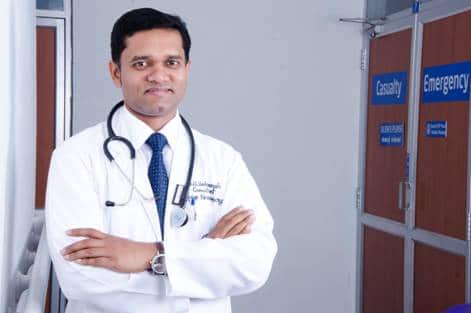It is scoliosis, when the normal spine, which is supposed to be straight is twisted or curved and shaped wither like an S or C. It is most commonly noticed in children aged 10 to 15 years of age during the growth spurt which is just before puberty, females more than males comparatively. It improves with treatment and is usually not serious. Treatment may or may not be needed based on the degree of curvature. But some curves can be disabling, reducing the space within the chest and making it difficult for the lungs to function properly.
Causes:
- Idiopathic : The most common type of scoliosis where the cause is unknown.
- Congenital : This occurs even before the birth due to abnormal spinal development.
- Neuromuscular : Caused due to conditions like cerebral palsy or muscular dystrophy affecting the muscle control and posture
- Degenerative : This happens with age due to wear and tear and degenerative changes.
Symptoms:
- Uneven shoulders
- Uneven hip levels
- Uneven chest
- Stooping sideways
- One shoulder blade appearing more prominent than the other
- One side of ribcage jutting forward
- Prominence of one side of the back when bending forward
- Back pain
- Fatigue
- Difficulty in breathing
Diagnosis:
- Parents must check the children for the above symptoms at home mostly after the age of 10 years.
- Teachers, friends or sports friends could notice
- Medical camps can be conducted in schools and homes by medical professionals
Treatment:
- Very mild curvature : Regular monitoring – No intervention
- Mild curvature : Exercise and Physiotherapy to improve posture, flexibility and muscle strength
- Moderate curvature : Back brace to prevent further progress of the curve (Particularly growing children)
- Severe scoliosis : Surgical intervention
Majority of the people with scoliosis lead an active life even after conservative or surgical treatment. When detected early and with proper intervention by skilled and experienced professionals, scoliosis can be managed well without any difficulty.




